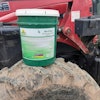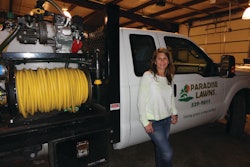When storing your equipment for more than a month, there are proper steps to take to ensure the equipment will be ready for use when it is brought out of storage. Not taking care of equipment before storage can lead to unnecessary damage and unwanted expenses.
Contractors should consider contacting their dealer to arrange off-season service so equipment is ready to go in the spring. If handling the pre-storage maintenance on their own, contractors should consult their equipment dealer for information on specific manufacturer-suggested equipment and engine maintenance.
1. To get the equipment ready for storage, clean it first.
2. Remove and examine the spark plug for excessive carbon buildup, and evaluate the need for replacement. Carefully reinstall the spark plug and reconnect the ignition lead.
3. Check the spark arresting screen for buildup, and clean or replace with a new one.
4. There are two ways to handle fuel before storage. Manufacturers may recommend running the equipment dry of fuel before putting it away for the winter. If you decide to run it dry, start by emptying the fuel tank. After the tank is empty, if it has a primer bulb, pump the bulb until dry, then replace the fuel tank cap and start the engine. Otherwise, just start the engine. Run it at idle until the engine stops. It is important that the engine is run only at idle speed, so there will be lubrication in the system. Do not operate the throttle or "rev" the engine. Just let it idle until it stops.
Some believe that running engines dry can be harmful, causing corrosion in the carburetor from the presence of oxygen and water. Several fuel additives have hit the market to stabilize fuel before storage. Start by adding the stabilizer of your choosing to cans of fresh gas starting one month before the end of the season.
Fill the tank 95% full with fresh, stabilized fuel at the season’s end. Leaving a small amount of room in the tank prevents the fuel from expanding in warmer weather and spilling out of the tank. This small open area reduces the amount of the tank where water vapor can condense and contaminate the fuel. Run the engine for a couple of minutes to get the stabilized fuel into the carburetor and fuel lines.
5. Once all the maintenance is handled, store equipment in a dry and, if possible, dust- and frost-free place. Some equipment can easily be hung on a wall to save space.
Visit the Small Engine Repair section of greenindustrypros.com for more equipment maintenance tips. Remember to always consult your owner’s manual for proper maintenance as it relates to your specific make and model of equipment.




















